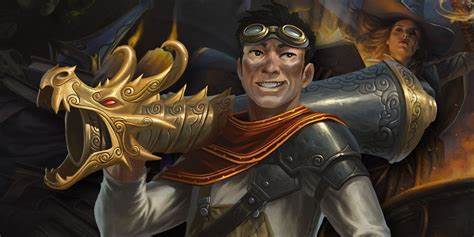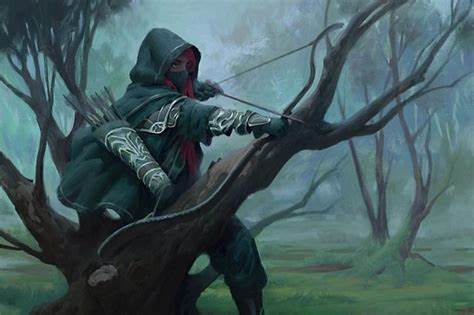The Artificer is a unique and relatively new addition to Dungeons & Dragons 5th Edition, originally introduced in Eberron: Rising from the Last War and further expanded in Tasha’s Cauldron of Everything. Artificers are inventors and master crafters, combining technology and magic to create devices, enchant weapons, and enhance the abilities of their allies. Whether you’re a beginner or a seasoned player, this guide will show you how to build and play an Artificer in D&D 5E.
What is an Artificer?
Artificers are half-casters who excel at combining magic and craftsmanship. They are skilled in both spellcasting and creating magical items, making them highly versatile characters. Their magic comes from an understanding of how to manipulate the arcane forces through tinkering, alchemy, and invention.
As an Artificer, you’re an inventor, always tinkering, improving, and using your intelligence to turn mundane items into magical wonders. This class is perfect for players who enjoy crafting, problem-solving, and playing characters with a scientific approach to magic.
Step-by-Step Guide to Creating an Artificer
1. Choose Your Artificer Subclass
The Artificer class has a few subclasses, each with its own distinct playstyle. These subclasses, also called Artificer Specializations, define the kind of inventor your character is.
- Alchemist: Alchemists focus on creating potions, elixirs, and healing brews. They specialize in both offensive and defensive magic, combining chemistry and spellcasting to heal allies or deal elemental damage.
- Artillerist: Artillerists build magical cannons and specialize in explosive firepower. They are the perfect subclass for players who want to deal significant ranged damage or control the battlefield with summoned turrets.
- Battle Smith: A Battle Smith is both a protector and a warrior, creating magical armor and weapons. They also have a Steel Defender—a mechanical pet that fights alongside them and protects the party.
- Armorer (Tasha’s Cauldron): The Armorer turns themselves into a walking, arcane-powered suit of magical armor. This subclass is ideal for players who want to be on the front lines of battle, either as a tank or a damage dealer.
Each subclass has a different flavor, so choose the one that best matches the role you want to fill in the party: healer, damage dealer, tank, or battlefield controller.
2. Choose Your Race
When creating an Artificer, picking a race that boosts your Intelligence will give you an edge, as Intelligence is the Artificer’s primary ability score for spellcasting and class features. Good racial choices include:
- High Elf: Provides a boost to Intelligence and offers a free cantrip, giving you more spellcasting options.
- Gnome (Rock or Forest): Both Rock Gnomes and Forest Gnomes get a bonus to Intelligence and have features that synergize well with the tinkering and crafting aspects of the Artificer class.
- Vedalken: From Guildmaster’s Guide to Ravnica, Vedalken have a bonus to Intelligence and can also reroll failed saving throws, making them resilient and clever.
Races that increase Constitution or Dexterity are also good, as they enhance your survivability and combat prowess.
3. Ability Scores and Skills
Your primary ability score should be Intelligence, as it governs your spellcasting and many of your class abilities. Constitution should be your second priority to increase your hit points and concentration saves. Dexterity or Strength comes next, depending on whether you want to focus on ranged or melee combat.
A sample ability score priority for an Artificer might look like this:
- Intelligence (for spellcasting, creating magic items, and many Artificer features)
- Constitution (for hit points and durability)
- Dexterity (for ranged combat and defense) or Strength (if you’re going for a melee build)
For skills, consider the following:
- Arcana: As an expert in magic and invention, Arcana is a natural choice.
- Investigation: Great for solving puzzles and finding clues during adventures.
- Perception: A universally useful skill for spotting danger or hidden objects.
4. Artificer Class Features
The Artificer class has a few signature features that make it stand out from other classes.
- Magical Tinkering: Starting at 1st level, you can imbue tiny objects with minor magical effects like light, sound, or recording messages. It’s a great tool for creative problem-solving.
- Infuse Item: One of the most exciting features of the Artificer, Infuse Item lets you craft temporary magic items at the end of a long rest. These can be weapons, armor, or utility items like a Bag of Holding or Goggles of Night. Infusions grow stronger as you level up.
- Tool Expertise: Artificers are masters of tools, and starting at 6th level, you gain double proficiency with any tools you’re proficient in. This makes you a key crafter in your party, whether you’re disarming traps, forging weapons, or brewing potions.
You’ll also want to plan out your Infusions as you level. Infusions allow you to enhance gear for yourself or your allies, making your entire party stronger. Consider which magic items will be most helpful in your current adventure.
5. Spellcasting
As a half-caster, the Artificer has a limited number of spell slots compared to full casters like Wizards or Clerics. However, Artificers can cast useful support spells while augmenting their combat capabilities.
Key Spells for Artificers:
- Cantrips: Guidance (boosts allies’ ability checks), Mending (perfect for quick repairs), Fire Bolt (reliable ranged damage).
- 1st-level Spells: Cure Wounds (healing), Shield (defense), Tasha’s Caustic Brew (AoE damage), Faerie Fire (utility, grants advantage on attacks).
- 2nd-level Spells: Web (control), Heat Metal (great against armored enemies), Mirror Image (defensive).
- 3rd-level Spells: Fly (mobility), Revivify (raise fallen allies), Haste (buff for yourself or an ally).
Artificers can prepare spells from the Artificer spell list after each long rest, giving you the flexibility to adjust your spells based on the adventure ahead. You’re also free to use your tools to craft or modify magical items, adding to your versatility.
Playing an Artificer: Role-Playing and Combat
1. Role-Playing Your Artificer
An Artificer’s background and motivations can be incredibly varied. Perhaps your character is a tinkerer looking to perfect their inventions, or maybe they’re an alchemist seeking the elixir of life. When role-playing, think about how your character views magic. Is it a tool to be used, a mystery to be unraveled, or something to be engineered?
Artificers are also natural problem solvers. Whether it’s building a device to overcome an obstacle or concocting a potion to save the day, look for creative ways to use your abilities outside of combat.
Consider how your Specialization influences your role in the story:
- An Alchemist may be constantly experimenting with potions and formulas, while an Artillerist might focus on improving their turrets and ranged defenses.
- A Battle Smith could see themselves as a protector of their allies, while an Armorer views their inventions as an extension of their own combat prowess.
2. Combat Strategy
Artificers are excellent at supporting their party in battle, but they also have the tools to deal damage and control the battlefield. Depending on your subclass and choices, you can adapt your combat strategy to fit your role.
- Damage Dealer: Artillerists, for example, use their Eldritch Cannon to bombard enemies with ranged attacks, while Battle Smiths combine weapon combat with magical strikes.
- Support Role: Alchemists can heal and buff allies while creating dangerous potions that debilitate enemies. Even if you’re not an Alchemist, spells like Cure Wounds and Haste make you a valuable party asset.
- Control the Battlefield: Spells like Faerie Fire, Web, and Heat Metal help restrict enemy movement and expose them to attacks from your party.
Infusions also play a large role in combat, as they can enhance your party’s gear, turning regular weapons into +1 weapons or crafting an Enhanced Defense to protect your frontliners. Rotate your Infusions based on your party’s needs.
3. Use Your Short Rests
Artificers regain their Infuse Item abilities on a long rest, but many of their key abilities, like spell slots and the use of Eldritch Cannon (Artillerist), reset after a short rest. This means you can stay effective in longer adventuring days, making short rests an important tool for maximizing your power.
Conclusion
The Artificer in D&D 5E is a versatile and rewarding class, combining magic, technology, and invention












